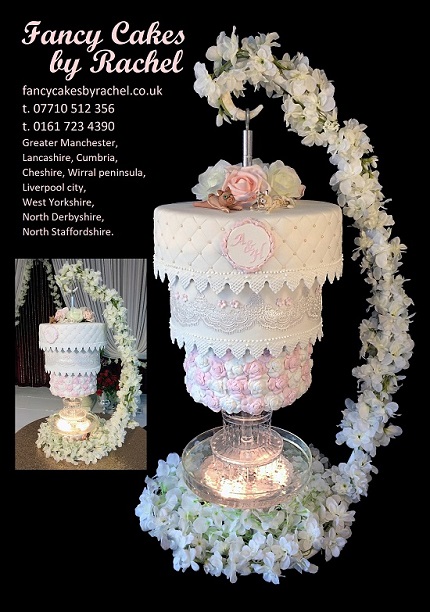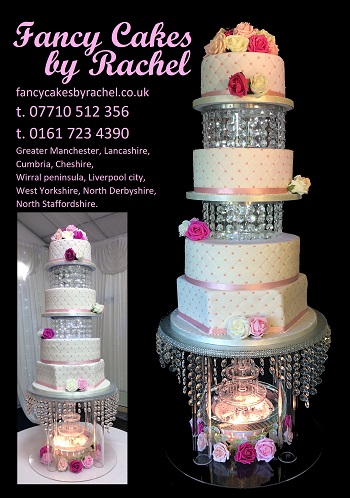Each country has its preferred wedding cake, but it has changed significantly over time. For example, in Korea, a traditional wedding cake was a rice cake topped with powdered red beans but now the preferred type of cake is a sponge with fresh fruit.
Some communities share the cost of the wedding. Each guest will bake a sponge to bring to the wedding, these are then stacked up on the day at the wedding.
In the UK, US and Australia the preferred cake was a rich fruit cake with marzipan and icing but now sponge cakes are more popular. In the UK the most popular cake flavours currently are vanilla sponge, lemon sponge, chocolate sponge and red velvet sponge. But the flavours range is increasing with couples choosing carrot cake, coffee or pistachio for their cakes. Or alcohol flavours such as gin and rhubarb or champagne flavour.
The Greek wedding cake was traditionally flavoured with honey, quince and sesame seed, however, now the preference is for almond. And the designs are very elaborate, very tall and architectural.
In the US there is often two wedding cakes on the wedding day. The bride’s cake which will be a tall white iced cake and the groom’s cake which will usually be one tier and often decorated to reflect an interest or hobby of the groom.
Bermudans also have two cakes. The bride’s cake will be a three-tier fruit cake and decorated with silver to represent prosperity and the groom’s cake will be a vanilla sponge decorated with gold to signify the head of the family.. The cake may also have a living cedar tree on top and the couple will plant this tree in their garden after the wedding to represent growing and continuing love.
Traditionally the wedding cake was a three-tier, square, stacked cake but now the size, shape and construction of the cake are down to personal preference. The cake can be one-tier or twenty-tier. It can be round, square, hexagonal, petal-shaped, hourglass-shaped or spherical.
The cakes can be stacked, separated with pillars, separated with flowers, Perspex cubes or crystal separators. They can be placed on a tall stand with a water fountain underneath.
Upside-down cakes are now more popular, the upside-down cake is suspended on a steel stand. Swing wedding cakes are also increasingly seen. A tall arch decorated with flowers and a swing in the centre, the cake sits on the swing.
Wedding cakes generally are becoming more elaborate. Couples want their cake to be the centre piece for their wedding and as the focal point, the cake needs to be “different”, astonishing and beautiful.
The cake can be covered with icing, usually white or ivory but increasingly couples are opting for coloured icing to reflect the colour theme of the wedding.
Buttercream frosting is another option for the cake covering if a more rustic feel is wanted. The buttercream frosting can be smooth or ridged, often with a white chocolate drip.
Decoration veers from very plain with little detailing to very elaborate with detailed lace work, piped decorations or mouldings.
The cake is often topped with a bouquet of flowers matching the bridal bouquet, but many couples opt for figurines. A bride and groom topper. Sometimes the topper can be more fun such as lego figures or an animal topper.
The wedding cake isn’t always cake. Some couples have had a cheese wedding cake, in France they often choose a croquembouche profiterole tower. In Scandinavian countries a pastry tower is the preferred option.
Wedding cakes can be whatever the couple wants it to be. Further designs can be viewed in the galleries


